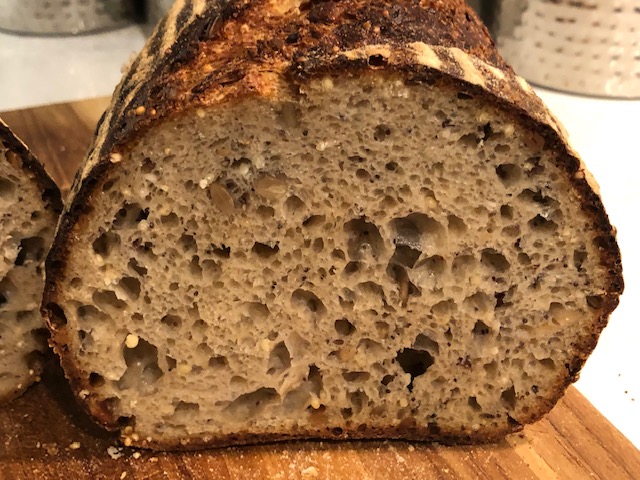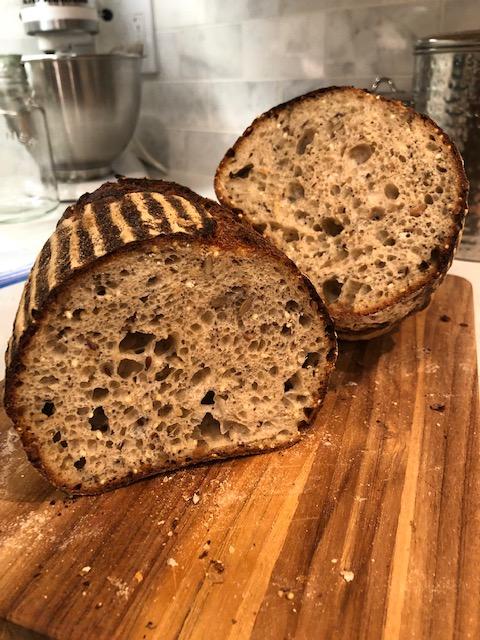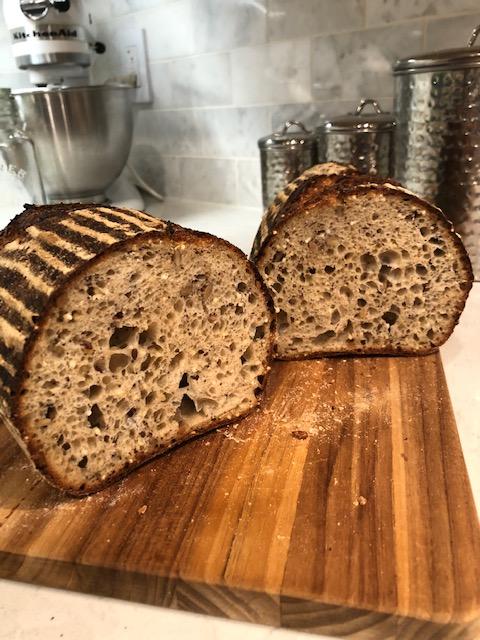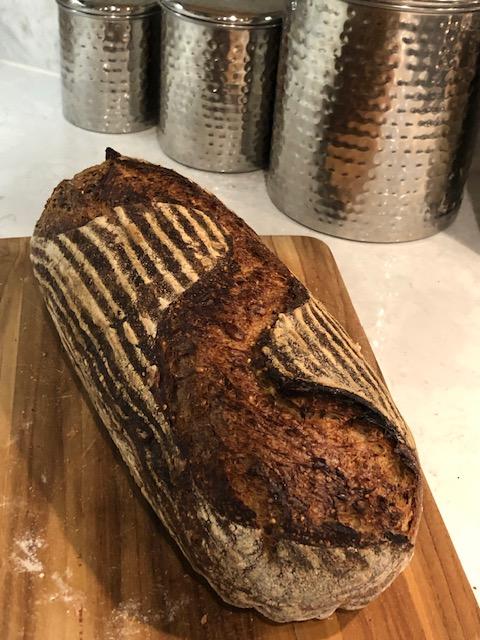Yeast Water Pizza Crust
I started my first yeast water culture last weekend with a mix of dried fruit (raisins, dates and apricots...mostly raisins). I didn't really know what to expect. After four days, it looked like most of the fruit was floating and I had good fizz. Some of the larger pieces of apricots and dates were still on the bottom but I had read that was to be expected (and made sense). The 'test' starter was mixed up that evening and left in the cold oven with the light on over night. It had nice activity by morning, having nearly tripled, so I mixed up a full le



